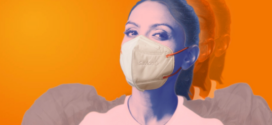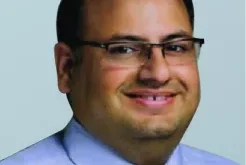In the below article, we explain to you why spinal stenosis is serious in older patients and needs timely intervention. Read on to know more about the symptom and treatment options to manage it.
Lumbar canal stenosis is loss of space and narrowing of the spinal canal, causing compression of the spinal nerves. It is said that nearly 12 to 21 percent of the older population suffers from this disabling ailment throughout the world and the percentage is increasing with the ageing population. Symptoms may start from the early fifties and progress as age advances. In olden times it was assumed that life slows down after retirement, but this thinking has changed now, It is said that life begins at 40, when you start to enjoy life and after retirement, the aspirations are even higher. Age is just a number, by that, it means that people are active after sixty and young at heart. But the disabling back pain and leg pain of spinal stenosis is a curse of old age.
What is Spinal stenosis?
The basic spinal structure is like a canal formed by a series of spinal bones with plenty of space normally to allow safe passage for the spinal cord and nerves, each segment of the spine is formed by two spinal bones and the inter-vertebral disc in between. Due to degeneration and ageing, this shock-absorbing disc slowly bulges and ruptures and it reduces in height. This leads to other changes like arthritis and enlargement of spinal joints ( facets ), thickening, and buckling of covering ligaments. All these changes make the space inside the spinal canal narrow, resulting in the pinching of spinal nerves, causing irritation and inflammation (swelling ).
The symptoms: Usually these changes are felt in old age but in some people the spinal canal is narrow by birth and these people can feel the symptoms much earlier in life. Due to the sneezing of spinal nerves and swelling following symptoms may be felt in the back and leg.
- Numbness or tingling in the foot or leg – Burning sensation in the sole
- The feeling of vague heaviness in the legs and feet
- Pain in the back and one or both legs
- Cramps in the calf or legs, disturbing sleep at night
- The feeling of pins/needles in the legs and feet
- Pain, burning, or tingling in the back
- Pain or cramps in the legs on walking or standing
- Pain is initially reduced on bending forwards or rest
- Weakness in the legs
- Problem in balancing
- Urinary problems like urgency, increased frequency, or difficulty
- Sudden severe compression of nerves can cause paralysis or incontinence
Treatment
- Proper analysis of the patient and MRI can pinpoint the exact level in the spinal canal and also the grading of the narrowing. In the initial stages, it is treated by specific medicines to relieve pain, reduce inflammation and swelling of the spinal nerves and improve the functioning of the nerves.
- Advice regarding proper posture, ideal weight, and lifestyle modification is given according to the analysis. Exercises and physiotherapy to reduce the pain and symptoms are prescribed.
- Moderately severe pain can be managed by Injections at the specific spots in the spine to reduce the swelling of the nerves and reduce pain.
- Severe compression is treated with Surgery, the aim is to decompress the nerves by enlarging the spinalcanal by cutting the spinal bones and in some cases fusion of the spinal segments with metal implants to stop motion in the painful area.
Advanced treatment of this condition: Advancing age also brings with it other problems like High blood pressure, Diabetes, Heart, Lung, and Kidney problems, and obesity, which all make it difficult for major surgery and anaesthesia. Softening of bones and degeneration can accelerate problems in ageing spine and would require extensive surgery. To overcome the problems encountered in open spine surgery, spine surgery has evolved into Endoscopic Spine surgery.
Advantages of Endoscopic Spine surgery:
- It can be done through a very small cut (Keyhole), preventing damage to the already weakened spinal structure. – Incision is so small ( Less than a centimeter) that it can be stitch-less or require just 2-3 stitches.
- Endoscope has the ability to reach the problem areas and show a clear and magnified view.
- Very tiny and precision instruments like diamond burrs, radio frequency cautery, and lasers are used. All this makes it possible to avoid General anaesthesia and the procedure can be done in an awake patient, this reduces the anaesthesia risk and also prevents damage to the spinal nerves and problems like wrong-level surgery are prevented.
- All this makes it very safe and precise with very quick recovery, less hospital stay, and discharge home in a day or two.
- Most patients are pain-free the same day and start walking. – Risk of infection is also very less.
- Long hospitalization, long bed rest, Blood transfusion, long-term intravenous medication, specialized care, and physiotherapy, all can be avoided. Does not require major dressing/suture removal. All this makes it cost-effective.
The last word: If spinal stenosis is a curse to ageing, advanced Endoscopic procedures are a boon. Independence and pain-free mobility are essential in old age. So, don’t neglect your back and leg pain, as neglect can cause irreversible damage. Keep moving and stay young.
Dr Anand Kavi, Spine Surgeon, Apollo Spectra Mumbai
 Newspatrolling.com News cum Content Syndication Portal Online
Newspatrolling.com News cum Content Syndication Portal Online





